This week, Paul Higgins, Community Owner at Cloud Consultants Collective, joins Marcel to discuss best business operations and how to optimize your agency’s business model for more profits.
About Paul Higgins
Paul Higgins is a sales strategist, lead generator, podcaster, author, and business growth strategist. With almost 30 years in the business under his belt, Paul is passionate about helping Cloud Business owners to do this – scale to live life with NO LIMITS!
At age 18, Paul was diagnosed with a condition called Polycystic Kidney Disease (PKD). Knowing what was to come, he changed the way he approached his life. He chose to live a life where he challenged himself, continual learner, and help others make more impact.
He had an 18-year career at Coca-Cola before taking control of his health, whereupon he transferred his system thinking to the Cloud Industry. In 2019 he gained a new kidney from his best mate Brendan and sold his Cloud consulting business to a Google partner.
Now – as founder of Paul Higgins Mentoring – he helps Cloud partners to scale to either exit successfully, as he did, or have someone run it for them. And when he’s not doing that, he loves to play golf (badly).
Points of Interest…
- Paul’s Framework for Best Business Models 2:22
- Three Pillars to Defining a Best Business Model 5:14
- Identifying Viable Niches for your Business Model 8:22
- Offer Design & your Business Operations 12:20
- Sunk Costs in Terms of Best Business Operations 21:46
- Changing the Dynamics of Your Business Model 24:14
Framework for Best Business Models
As it happens, not only have I appeared on Paul’s show, but several of his clients have actually been guests on this very show, which was news (among them Greg Hickman, Juliana Marulanda, and Brad Farris) Before we get to the nub of today’s episode, below is Paul’s succinct outline of what he currently does…
“I helps cloud consultants and agency owners, helping them to scale to exit. Exiting can really take two forms; one is that they do exit the business and they sell the business. Or, the other option normally is that they get someone in to run it, but they’re actually exiting themselves out of being the key factor in earning their cash flow and their profit.”
In addition to now branching out to coach others, Paul has developed a three-part framework that is extremely central to how he views service businesses and, most importantly, what needs to be in place in order for them to scale.
Paul provides a potted history of platforms he’s been behind ***from 3:13 minutes***, culminating in Copper and Mavenlink, before selling out to a Google partner. All of this learned experience of things that worked well, and things that didn’t work so well, has been put into a blueprint, broken down thusly…
- Optimize your business model
- Sales marketing engine
- High performing team
While this may sound pretty basic; actually doing it is where the complexity lies.
I really wish we had time to dig into all of them today, however, we’ve going to hone in on Point 1 – that being Optimizing your Business Model. It’s a key topic that doesn’t nearly get enough attention – how to think through identifying the right business model for your agency…
Three Pillars to Defining your Best Business Model
A lot of people simply see an agency as being a straightforward thing in terms of its business model. However, there are a lot of different things at play which influences such things as your pricing and how you structure teams.
So, how would Paul define a business model for the purpose of this conversation? Well, you won’t be surprised to learn that this too has been broken down into three key sections (never underestimate the power of three!). The first part is knowing your…
“… sepcialized niche, right? The further you niche down, the easier it is to build a successful agency… The agencies we typically help are more HubSpot agencies, which brings an element of consulting and services, and some have developed product.”
So, specializing in your niche is your first component, meaning your second must be…
“… optimizing your offer. The easier you get your offer – while making it irresistable – the easier it’s going to be to sell it. Why try to make something more complicated to sell; make it as easy as possible!”
And the final point to Paul’s triumvirate of fine-tuning your business model is…
“… client satisfaction. Really understanding how someone is currently buying things – which means you can then do your sales and marketing.”
Each time Paul and a client have spent time focusing on this area, the resulting changes in their business have been nothing short of seismic. Put it this way; if you manage to tweak your sales, that might glean you a 2-5% margin gain, but if someone like Paul can fundamentally change the way you go to market and get the business model right, then you can bring about notable changes in both your profit and margins.
Like Stephen Covey states in The 7 Habits of Highly Effective People, “start out with the end in mind.” ***My thoughts on Paul’s Three Pillars to Define your Best Business Model from 7:47 minutes***
Identifying Viable Niches for your Business Operations
In terms of niching, I’m keen to learn some of Paul’s core tenants he feels are important when it comes to understanding the best niche for your business.
Firstly, when working with people, Paul generally asks them ‘Where have you already got some experience?’ Most clients have come from corporate/a certain industry background they’re already familiar with, so that’s a great base. Why? Because you’ve already got a network, and you understand the language, there are lots of benefits to using that as a starting point.
Secondly, pinpoint who in your available network you can interview and research. This way, you can locate potential pain points for your future clients.
“Doing that pain point identification, and really digging into that is validation for clients. As for how you can actually start to test? That’s where LinkedIn is fantastic! You can go and find these people and then you can actually start to do some testing to see if what your research has told you is actually working in the market.”
The central tenant here is figuring out the problems that a particular set of people have, and setting about really cultivating a deep understanding of that problem. This can be an overlooked yet PIVOTAL aspect of choosing your niche.
Always ask yourself what problem do we solve. What is your ideal client’s “hair on fire” problem that needs fixing immediately?! Then, what are the unique/innovative solutions we need to bring to the table to solve said problem better than anyone else?
Speaking of identifying your Ideal Client; Paul has a profile for that, just go to paulhigginsmentoring.com/icp for more.
Offer Design & Best Business Operations
Moving on to our second tenant after Identifying Viable Niches, which is Offer Design. Assuming you’ve identified and landed on a core problem that your ideal client is experiencing, via high-quality interactions through interviews and subsequent customer development (see Lean Customer Development and Jobs-to-be-Done Framework) now you need to go about building your offer. How does one go about doing that?
“The first thing to consider is your current pricing. So, before we go too far into changing your business model, you’ve got to fund additional people like me to come in, plus you also have to fund any additional changes. Therefore, you need to look at your Value Pricing.”
Value Pricing can be defined as the absolute gain you can get, and it doesn’t have to be exact, it can be a ballpark. For example, Paul suggests to clients that he takes 10% while they get 90%, so instead of charging by hours/time. Because let’s face it, most of us undervalue what we’re worth.
Sometimes, the way that we solve problems for clients is very complex and not exactly predictable. Therefore, how should we adapt our Business Model to enable us to handle such uncertainty?
“Well, it goes back to our Number One point; if you are doing more like clients, you’ve then got more examples that increasingly de-risks the situation. That’s why it’s so important to niche your niche, then you can go to someone and say, ‘Look, when I worked with five other clients exactly like you with the same problem, this is what I did’.”
When you’re in a position to showcase this, then your client knows you specialize in this certain area, unlike some other agencies who sort of thought they might be able to help in some loose manner. As for the key elements which make an offer attractive to a client; Paul addresses these from 16:36 minutes ***
Sunk Costs in Terms of Best Business Operations
It seems fitting at this juncture to address the fact that some of you might be reading, thinking “I don’t sell to big businesses. I sell to small businesses with small budgets, and they’re very cost conscious.” Or, perhaps “I’m in a commoditized service and sell pretty generic stuff; none of this applies to me” – well, that’s not necessarily the case.
The assumptions here are that you can scope the work and that there is, you know, some kind of value conversation to arbitrage. If there is, these are the right mechanics to be employing.
However, there is also going to be a market/need for people to do low-value work that is commoditized for small businesses which don’t have big budgets. This work is high-risk, and cannot be scoped, therefore you HAVE to sell time.
In these cases, you must consider the design of your business model and figure out how to adjust it whereby you either share the risk or ensure that – at the end of the day – your margins remain healthy. Additionally, the context for your client is important in terms of what they’re willing to pay. As for Paul’s opinion on this matter?
“I think you’ve summed up Sunk Costs. I get lots of clients saying, ‘Well, I do sell high-volume low-ticket margins; I’m constantly competing on price’ and I’m like, ‘Well, we’ve gotta change who you service’.” Coke used to always say; ‘there’s someone that needs to be the most expensive in your industry, it might as well be you’.”
If you specialize in a certain niche, and you thus can be an expert at solving that specific problem, then you can charge a fair price. Granted, the first six months may be painful as you’re migrating away from what you’ve been doing all along – but then it becomes infinitely easier to do all the other elements, hence why Paul advocates sorting your Business Model first.
Improving your positioning, moving to a higher value situation, and, and just improving your margins makes everything more forgiving.
Customer Satisfaction When Optimizing Your Business Model
So you’ve got your consulting, your services, and then if you can sell a product on top of that; they’re the three pillars to your Recurring Revenue, the three legs to the stool. If you can get to more recurring, obviously that’s much better for you – particularly if you wish to sell the business. Why? Because it’s easier to value something that’s recurring rather than project based.
This brings us to the last piece of Paul’s puzzle – Customer Satisfaction – which involves who you serve and how that changes the dynamics of the business model. So, how should you approach them?
“I dunno if you’ve heard of Andy Paul, but he’s got a great podcast and he often talks about mapping out your buyer’s journey, map it out from how the person is actually buying it.”
This will inform how you set up the assets that you provide to help them during that journey.
“I realized that I was effectively just taking people through my sales gate. Not actually factoring it for the way that they actually buy.”
***Get more of my perspective on how this has been transformative for our business from 26.55***
Key Takeaway
Again, Paul’s triumverit in terms of Optimizing Your Business Model is…
- Defining your specialized niche
- optimizing your offer
- Ensuring client satisfaction
Fundamentally, it’s about de-risking the decision while also to your point, drawing the contrast, and really digging in and setting an anchor around the following…
- Look at what it’s costing you.
- Look at the pain you’re feeling by currently being in this situation
- Then look at how much upside there is!
Client case studies and previous examples of work are one of the most potent ways of de-risking that future outcome that you’re trying to draw the client towards.
Finally, if you are in a position where you’re able to start billing on value, then the time to the outcome becomes an interesting one because now that you’re not selling time, if you can actually get them to that faster, that increases the value in many ways as well! This is a paradigm shift for a lot of people from a world of selling time and billable hours.
See more from Paul…
- Paul Higgins Blueprint: https://paulhigginsmentoring.com/blueprint
- ICP Identifier: https://paulhigginsmentoring.com/ICP
- Lean Customer Development book
- Jobs to be done Framework
- LinkedIn – @paulhigginsmentoring
- Twitter – @PaulHiggins555
- Facebook – @paulhigginsmentoring/
- Instagram – @paulhigginsmentoring/
Did you learn anything new from this episode? Let us know in the comments below! We have helpful blogs designed to bolster your agency profitability, such as How To Calculate Your Billable Employee Cost-Per-Hour.
Our next installment of #APP, on January 25th, will see Marcel chat with Dan Martell for our 105th edition. Our previous blog – Episode 103 with Jhana Li – can be viewed here…
Avid #APP Listener?!
We would be eternally grateful if you could leave us a review…
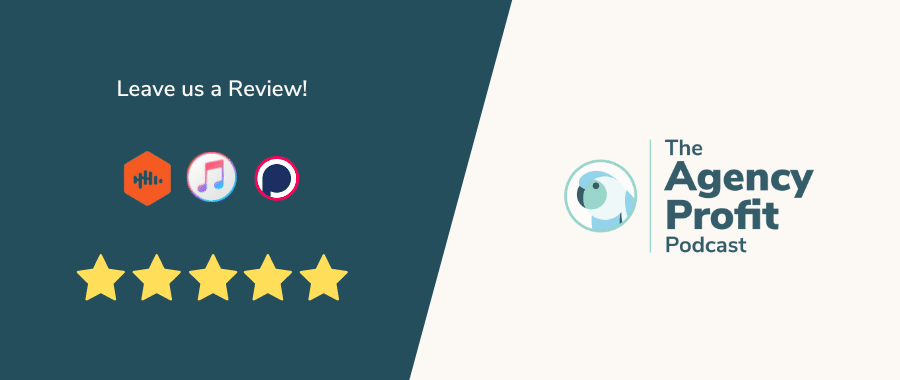
Agency Profitability Tool Kit
If you’re looking for more resources to help you improve your agency’s profitability, check out the Agency Profitability Tool Kit. It’s full of templates and checklists used when consulting clients. This helps them improve profitability by over 100% in under 60 days.
Fill out the form below for your copy!

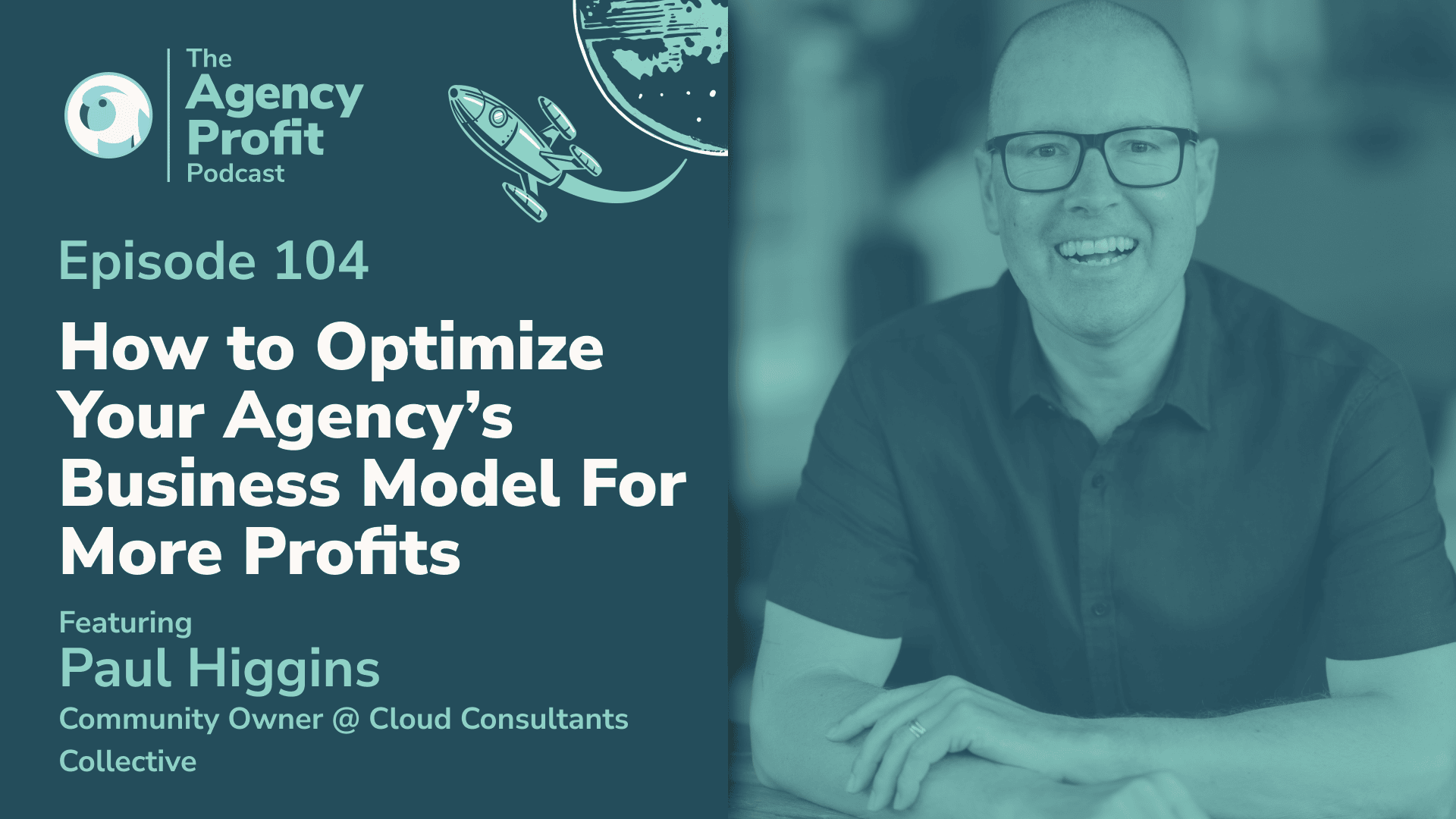

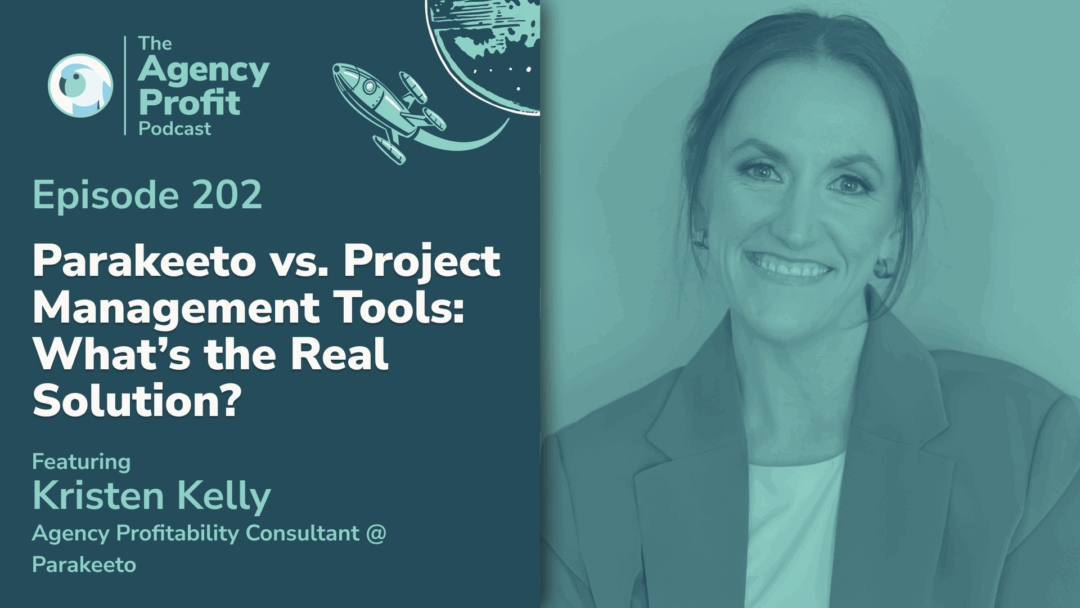
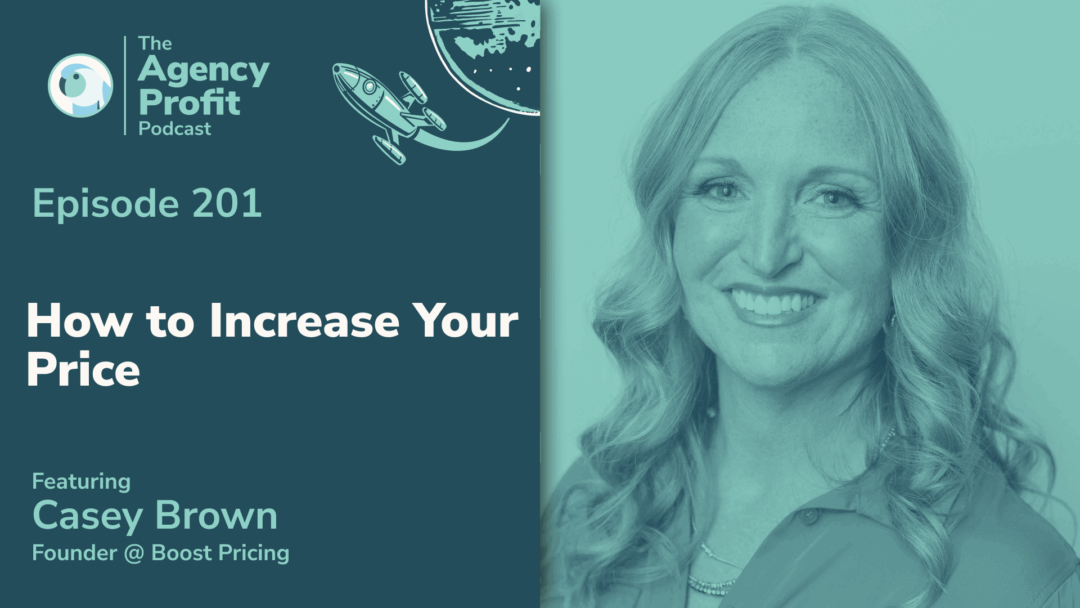
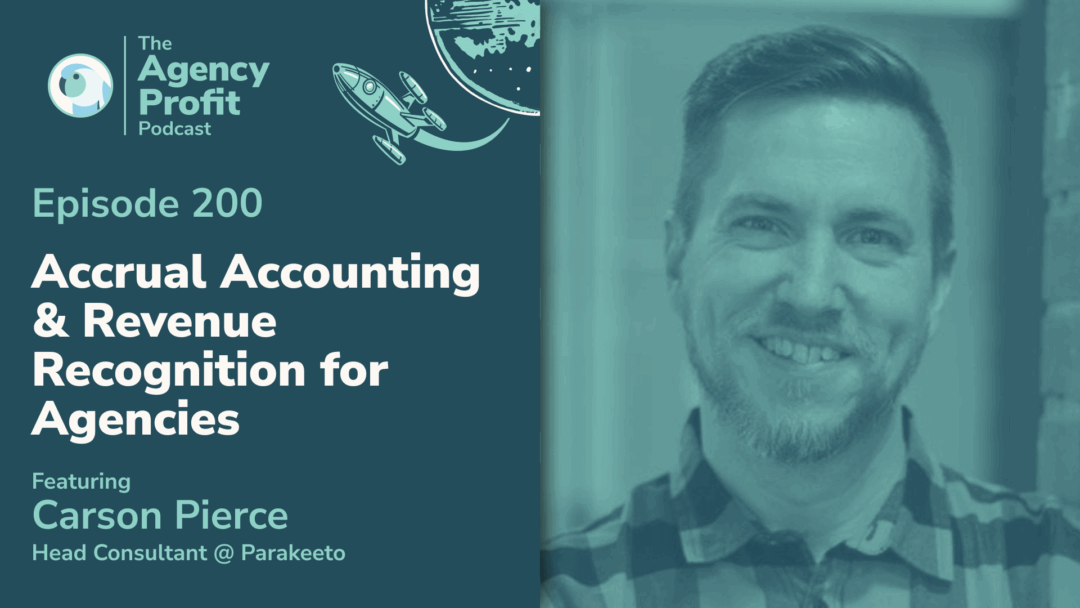

0 Comments